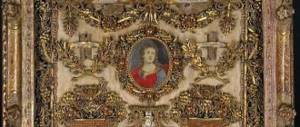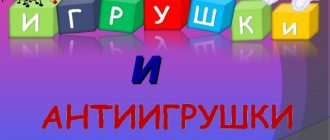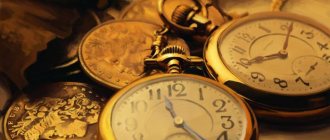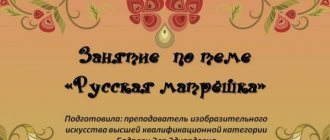Presentation of the GTO presentation on physical education on the topic
Slide 2
The head of Russia, Vladimir Putin, signed a decree on the revival of the GTO norms in the country, a Soviet-era physical education program for educating patriotic youth. The decree also decided to keep the previous name of this program – “Ready for Labor and Defense.” By this, the current government of the country emphasizes its tribute to the traditions of national history, Putin noted at the last meeting of the Council for the Development of Physical Education and Sports of Russia. The head of state also added that there are even financial resources available for the development of mass sports in Russia, since not all allocated budget funds for the Games in Sochi were spent in 2014. It is these funds that are planned to be used to launch the GTO program.
Slide 3
The GTO complex was first introduced into the USSR in March 1931, and then many foreign media called it “the new secret weapon of the Russians.” The GTO program existed until 1993. In 2014, the Government of the Russian Federation developed and adopted a number of documents aimed at recreating the GTO complex: Decree of the Government of the Russian Federation No. 540, Regulations on the GTO, Presidential Decree on the GTO.
Slide 4
Goal: Introducing children and adults to a healthy lifestyle. Objectives: Mass introduction of the GTO complex, coverage of all age groups of the population with the training system.
Slide 5
The contents of the complex are standards for the GTO and sports categories, a testing system, recommendations on the characteristics of the motor regime for various groups. The structure of the complex includes 11 steps (from 6 years to 70 years and older), for each of which types of tests and standards for their implementation are established for the right to receive a bronze, silver or gold badge in the first seven of them and without awarding a badge in the remaining four, depending from gender and age. In addition, for each stage the necessary knowledge, skills and recommendations for the motor mode are determined. Bronze badge Silver badge Gold badge
Slide 6
Stages: First stage - from 6 to 8 years; Second stage - from 9 to 10 years; Third stage - from 11 to 12 years; Fourth stage - from 13 to 15 years; Fifth stage - from 16 to 17 years old; Sixth stage - from 18 to 29 years old; Seventh stage - from 30 to 39 years; Eighth stage - from 40 to 49 years; Ninth stage - from 50 to 59 years; Tenth stage - from 60 to 69 years; Eleventh stage - from 70 years and older.
Slide 7
The complex consists of the following parts: The first part (normative-testing) provides for a general assessment of the level of physical fitness of the population according to established standards, followed by awarding badges of the complex. The second part (sports) is aimed at attracting citizens to regular physical education and sports, taking into account age groups of the population in order to fulfill rank standards and obtain mass sports ranks.
Slide 8
Recommendations for a weekly motor regimen (at least 8 hours) No. Types of motor activity Time volume per week, not less than min 1. Morning exercises 140 2. Types of motor activity in the process of work 100 3. Organized classes in sports sections and clubs in athletics, swimming, skiing, polyathlon, gymnastics, sports games, fitness, martial arts, athletic gymnastics, technical, military-applied sports, tourism, in health and general physical training groups, participation in sports competitions 135 4. Independent physical exercise culture, including sports games, other types of physical activity 135 During vacation time, the daily physical activity must be at least 3 hours
Slide 9
Types of mandatory tests (tests) and optional tests (tests) Name of the physical quality of the skill Types of tests (tests) Speed capabilities Shuttle run 3x10 m (s) Run 30 m (s) Run 60 m (s) Run 100 m (s) Strength Pull-ups from hanging on a high bar (number of times) Pull-ups from hanging while lying on a low bar (number of times) Bending and straightening of arms in support while lying on the floor (number of times) Bending and straightening of arms in support on a gymnastic bench (number of times) times) Bending and extension of the arms while resting on the seat of a chair (number of times) Kettlebell jerk 16 kg (number of times)
Slide 10
Types of mandatory tests (tests) and optional tests (tests) Name of physical quality of skill Types of tests (tests) Endurance 1. Running 1 km (min, s) 2. Running 1.5 km (min, s) 3 . Running for 2 km (min, s) 4. Running for 3 km (min, s) 5. Mixed movement for 1 km (without time) 6. Mixed movement for 2 km (without time) 7. Mixed movement for 3 km (without time) 8. Mixed movement 4 km (without time) 9. Nordic walking 2 km (without time) 10. Nordic walking 3 km (without time) 11. Nordic walking 4 km (without time) time) Flexibility 1. Bend forward from a standing position with straight legs on the floor (reach the ankle joints with your fingers) 2. Bend forward from a standing position with straight legs on the floor (reach the floor with your palms) 3. Bend forward from a standing position with straight legs on the floor (touching the floor with your fingers) 4. Bend forward from a standing position with straight legs on a gymnastic bench (below the level of the bench - cm)
Slide 11
Types of mandatory tests (tests) and optional tests (tests) Name of physical quality of skill Types of tests (tests) Applied skills 1. Skiing 1 km (min, s) 2. Skiing 2 km (min, s) s) 3. Skiing (min, s) 4. Skiing 5 km (min, s) 5. Skiing 2 km 6. Skiing 4 km 7. Skiing 5 km 8. Cross-country 1 km cross-country (not counting time) 9. 2 km cross-country cross-country (not counting time) 10. 3 km cross-country cross-country (not counting time) 11. 5 km cross-country cross-country (not counting time) timed) 12. Mixed movement of 1.5 km over rough terrain (untimed) 13. Untimed swimming 10 m 14. Untimed swimming 15 m 15. Untimed swimming 25 m 16. Untimed swimming 50 m 17. Swimming 50 m taking into account time (min, s) 18. Shooting from an air rifle from a sitting or standing position with elbows resting on a table or stand 5 m (number of points) 19. Shooting from an electronic weapon from a sitting or standing position with elbows resting on a table or stand 5 m (number of points) 20. Shooting from an air rifle from a sitting or standing position with elbows resting on a table or stand 10 m (number of points) 21. Shooting from an electronic weapon from a sitting or standing position with elbows supported about a table or stand 10 m (number of points) 22. Hiking trip with testing of tourist skills
Slide 12
Types of compulsory tests (tests) and optional tests (tests) Name of physical quality of skill Types of tests (tests) Speed-strength capabilities 1. Standing long jump with a push with two legs (cm) 2. Running long jump (cm ) 3. Throwing a ball weighing (m) 4. Throwing a sports equipment weighing 500 g (m) 5. Throwing a sports equipment weighing (m) 6. Raising the body from a supine position (number of times in 1 min) Coordination abilities Throwing a tennis ball on target, distance 6 m (number of hits)
Slide 13
Testing process Preparation Medical examination Compliance with standards Award
Slide 14
Stages of implementation of the GTO complex First stage From September 2014 to December 2020, organizational and experimental stage of implementation of the GTO complex among students in educational organizations of individual municipalities of the region Second stage 2020 - implementation of the GTO complex among students of all educational organizations in the region and other categories of the population in individual municipalities formations of the region The third stage 2020 is the stage of widespread implementation of the GTO complex among all categories of the population of the region
Slide 15
PROPAGANDA of the GTO Complex Cultural, educational and educational activities Work with the media Videos Mass propaganda events Single GTO Day GTO Portal g to.ru GTO Ambassadors GTO Corporate Identity
Slide 16
Thank you for your attention!
Social project on the topic “We are taking the GTO again”
Project “We are passing the GTO again”
1. Relevance of the project.
Health and healthy lifestyle. Unfortunately, these concepts do not yet occupy first places in the hierarchy of human needs in our society. Nowadays you almost never meet a completely healthy child. The intensity of students' educational work is very high, which is a significant factor in weakening health and an increase in the number of various deviations in the body's condition. The reasons for these deviations are a sedentary lifestyle (physical inactivity), accumulation of negative emotions without physical release, and psycho-emotional changes.
In accordance with the Law “On Education,” the health of schoolchildren is one of the priority areas of state policy in the field of education. The issue of preserving the health of students at school today is very acute.
The relevance of the project is to attract the largest number of gymnasium students to participate in passing the VFSK “GTO” standards, as well as to positively motivate them to increase physical activity through the desire to improve their results when passing the GTO standards, by enrolling in various sports sections and clubs.
2. Goals and objectives of the project.
Objective of the project:
to create positive motivation among schoolchildren to play sports, improve physical qualities, introduce them to physical education and sports through involvement in passing the standards of the All-Russian Sports Sports Complex "GTO".
Project objectives:
- Creating conditions for passing the standards of the All-Russian Sports Sports Complex “GTO” and developing the motivation of schoolchildren to engage in physical education and sports.
- Providing students with the necessary reliable information about the content of the All-Russian Sports Society "GTO" and its history in our country.
- Coverage of the largest number of students during the implementation of VFSK "GTO"
3. Participants with whom work on the project is carried out.
Students from grades 1-8 take part in the project.
4. Participants implementing this project.
Participating in the implementation of the project:
-Deputy director of the gymnasium for educational work for administrative control of the project implementation (coordination of forces and means to implement the project);
- physical education teachers for organizing and conducting the reception of the standards of the “GTO” complex (organizing and conducting competitions, sporting events);
-medical staff of the gymnasium (medical support, organization of monitoring the health status of project participants, access to standards and monitoring of events);
— specialists from the social and psychological service of the gymnasium (conducting sociological surveys, questionnaires, monitoring the effectiveness of the project);
- social partners of the gymnasium: SRO OGO VFSO "Dynamo" - stadium "Dynamo" (provision of sports facilities, members of referee teams)
- an initiative group of students in grades 7-8, 10 - (development of information materials - stand, multimedia presentation, holding information events for junior grades)
-parents of students in grades 1-8 - (providing accompaniment for students to the competition venue);
-famous and honored athletes (holding meetings with students in order to increase their motivation to pass the standards of the GTO complex and to play sports): 1. Gorbatov Anatoly Nikolaevich
— Honored Teacher of Russia, Honorary Citizen of the city of Saratov and the city of Khvalynsk
2.Vyacheslav Maksyuta
— Master of Sports in Greco-Roman wrestling. Candidate for Master of Sports in powerlifting and three-time and absolute champion in bodybuilding. In the Saratov region - the absolute champion in powerlifting.
3. Yuri Fedorovich Sisikin -
Champion of the 1960 and 1964 Olympic Games in team competitions. Five-time world champion (1959, 1961, 1962, 1965, 1966). Multiple champion of the USSR and the RSFSR, winner of the European Cup (1962, 1963, 1965), USSR Cup (1958, 1963, 1968), the only one from Saratov awarded the gold medal “For Outstanding Sports Achievement”. He has the Order of the Badge of Honor (1960). Recognized as the best athlete of the Saratov region of the 20th century. Works as director of a children's and youth fencing sports school.
5. Brief description of the essence of the project. Its structure and
content.
During the implementation of the project, at the preparatory stage, an input study of the awareness of participants about the All-Russian Sports Sports Complex “GTO” is carried out, a lineup is held - the opening of the project and presentations of initiative groups to students, in order to increase awareness, a competition of drawings and posters is held on the topic “Norms of the “GTO - VO!” . An initiative group of students, under the guidance of a physical education teacher, sets up a stand “What is GTO.” Physical education teachers, together with the gymnasium psychologist, organize meetings with famous athletes of the city and region “I passed the GTO - I will take the GTO!”
At the main stage, based on the principle of voluntariness, students who wish to register in classes through physicists are registered to pass the GTO standards by age level. The administration and physical education teachers draw up a schedule for passing the standards. This schedule is agreed upon by social partners (Dynamo Stadium).
At the 1st stage of passing the GTO standards (6-8 years old), a sports festival with game elements is held to increase motivation in children of primary school age.
At the final stage, an exit socio-psychological study of project participants is carried out on the topic of knowledge of the GTO complex and the desire to pass standards and play sports; at the final stage, the results of passing the standards are summed up and the deserved winners are awarded with diplomas and badges from the gymnasium.
Project modules.
1. Questionnaire “What do you know about the GTO”
2. Information support. (newspaper “We are passing the GTO again”, booklets, information on the gymnasium website, drawing and poster competition, stand)
3. Additional extracurricular activities aimed at improving and training the physical qualities of students (friendly meetings, social campaign “I choose sport”, sports competitions)
4. Meetings with famous people of the city and region on the topic “I passed the GTO - I will take the GTO”)
5. Formation of groups by age level for passing the GTO standards.
6. Master classes “Do as I do!” for students in grades 5-7 according to different types of GTO standards (strength, flexibility, speed and endurance)
7. Sports and educational marathon for grades 1-4 “I know! I can!"
8. Sports festival for primary classes.
9. Passing strength and flexibility standards (gymnasium gym). Passing running standards (Dynamo stadium).
10. Sociological survey of participants in the “Me and the GTO” project.
11.Final awarding of winners and runners-up.
6. Timing and stages of project implementation.
Project implementation stages:
- Preparatory stage – October-November 2014
- The main stage is December 2014 - April 2015.
- The final stage is May 2020.
7. Key methods, technologies, tools.
The following key ideas and concepts of the project can be identified:
Personality-oriented technologies –
the formation of such personality qualities as will, discipline, responsibility, creativity, as well as the presence of positive changes in the student’s experience and self-awareness.
Physical Culture and sport -
an expedient and useful activity, a tool for overall personal development, necessary for successfully passing the GTO standards.
Orientation of students towards a healthy lifestyle -
preparation for independent and conscious self-determination in life and social technology for the development of students’ personality.
Social partnership -
an open system of social and creative initiatives. This is a joint, collectively distributed activity of various social groups, which leads to positive effects that are shared by all participants in this activity.
The main way by which it is planned to implement the projected transformations is the creation of conditions that encourage students to be active in physical education, health and sports activities, in order to prepare and pass the standards of the All-Russian Sports Sports Complex "GTO".
8. Resources that are necessary for the effective implementation of the project
.
Human resources
of this project are the administration and physical education teachers of the school, responsible for physical education, health and sports work with children.
Methodological support
The project is carried out primarily by those responsible for physical education, health and sports work at the school, the school psychologist, the social teacher and the project managers.
Material and technical resources
are provided at the expense of the school, which uses technical means, sports equipment, equipment and school sports facilities: gyms, a sports ground, as well as the city’s physical education, health and sports infrastructure - the Dynamo stadium.
9. Results of the project implementation.
One of the main results of the project “We are passing the GTO again” is the involvement of 90% of children classified as the main health group to pass the standards of the All-Russian Sports Society “GTO”. At the same time, conditions are necessary for passing the standards of the VFSK “GTO” and increasing the motivation of schoolchildren to engage in physical education and sports.
Another important result is that students are 100% aware of the content of the All-Russian Sports Society "GTO" and its history in our country, which is what we achieved during the implementation of the preparatory stage of this project. Intermediate results: during the entrance survey, students showed the following results.
Table 1.
| № | Survey question | Initial 2-4 grades | 5-6 grades | 7-8 grades | |||||
| Yes | No | Yes | No | Yes | No | ||||
| 1 | Do you know what VFSK "GTO" is? | 2% | 98% | 4% | 96% | 15% | 85% | ||
| 2 | Do you want to pass the VFSK "GTO" standards? | 38% | 62% | 47% | 53% | 37% | 63% | ||
| 3 | Do you play sports? | 61% | 39% | 41% | 59% | 35% | 65% | ||
| 4 | Do you want to be strong, fast, agile and healthy? | 99% | 1% | 100% | 0 | 100% | 0 | ||
Based on the results, it can be noted that students (93%) still have little idea of what the VFSK “GTO” is and only 41% are ready to try to pass the standards.
The next event was a line where we launched the project “We are passing the GTO again!” and announced a plan of events, as well as a drawing competition “TRP is VO!” (see Photo materials “Drawing Competition”).
Initiative group No. 1 of students, under the guidance of a physical education teacher, studied information about the GTO complex and created a multimedia presentation “We are taking the GTO again,” which was demonstrated during class hours in grades 2-6 (see Multimedia presentation).
Initiative group of students No. 2 worked on the design of the stand “What is the GTO”. (See Photo materials “Information work”).
A meeting was organized with Vyacheslav Maksyuta, master of sports in Greco-Roman wrestling, absolute champion in bodybuilding, at which he told how he started playing sports, what successes he achieved, demonstrated his strength qualities and talked about his attitude to the GTO standards. At the end of the meeting, Vyacheslav advised all the children to play sports and try their hand at passing the GTO standards. (see Photo materials “Meeting with V. Maksyuta”)
10. Limitations, special conditions and requirements for the implementation of the project.
At the preparatory stage of the project, all students in grades 1-8 participate on the basis of the principle of voluntariness.
At the main stage, all students who are allowed to pass the GTO standards for health reasons by the gymnasium’s doctors participate in the project.
Students who are not allowed to pass the standards issue newsletters about the winners and runners-up, and high school students help in the work of the judging teams.
11. Unique features of the project and key success factors.
The project can be implemented in any educational institution. It is successfully integrated into any educational system, since it reflects the realities and needs of the educational policy of modern society. It is possible for each educational institution to select its own facilities for the implementation of the VFSK "GTO".
Healthy, socially active, sociable children, oriented towards a healthy lifestyle, accustomed to independent active physical education, health and sports activities - this is what the implementation of this project is aimed at.
List of used literature.
- Kumarin V. Pedagogy of environmental conformity and school reform.
M., Public Education, 2004.
- Selevko G.K. Career guidance Encyclopedia of educational technologies. T1, M., Research Institute of School Technologies. 2006
- Smirnov N.K. Health-saving educational technologies in the work of teachers and schools, M., ARKTI, 2003.
- Kolesnikova I. A. Pedagogical design: Textbook. Allowance for higher education textbook institutions / I.A. Kolesnikova, M.P. Gorchakova-Sibirskaya; Ed. I.A. Kolesnikova. - M: Publishing House, 2005. - 288 p.
- Derekleeva N.I. Motor games, training and health lessons. Moscow "VAKO", 2004.
- Kovalko V.I. Health-saving technologies. Publishing house "VAKO", 2004.
- Mishin B.I. Handbook for physical education teachers. AST Arstel, Moscow 2003.
5






